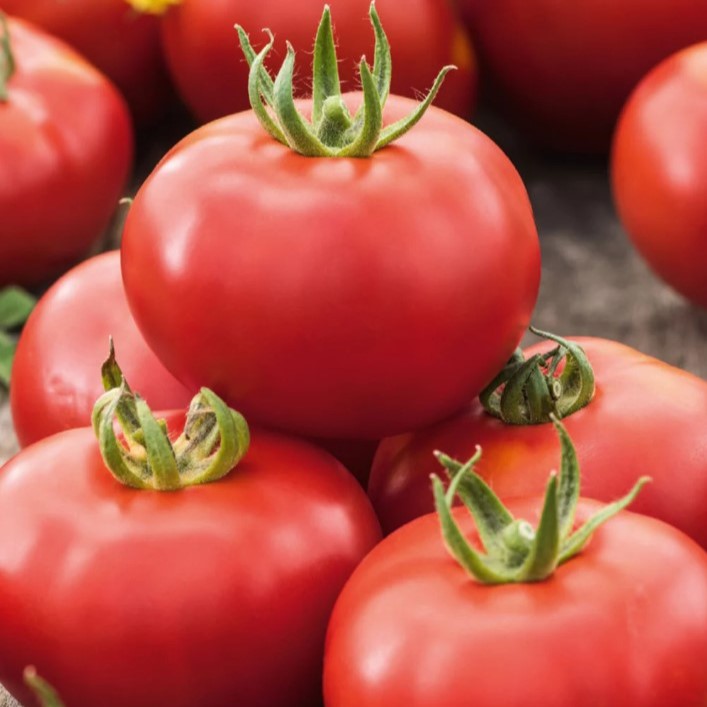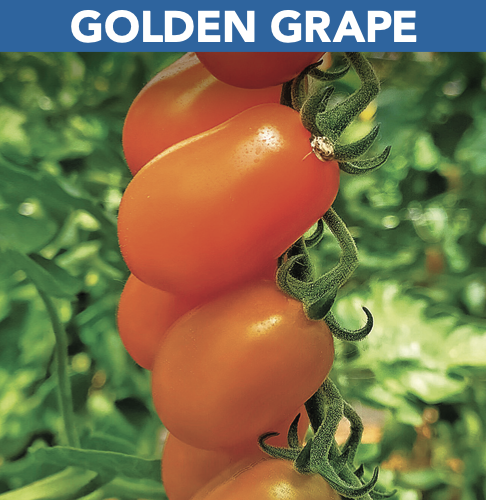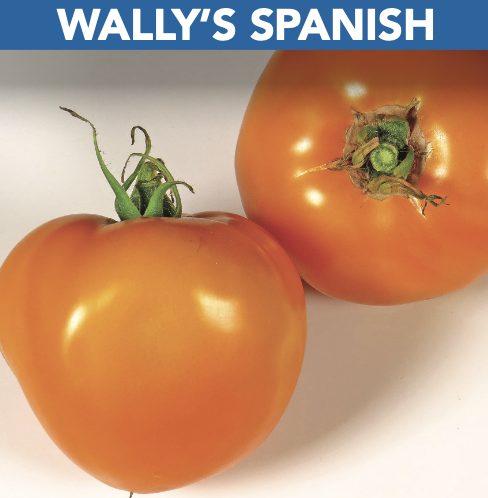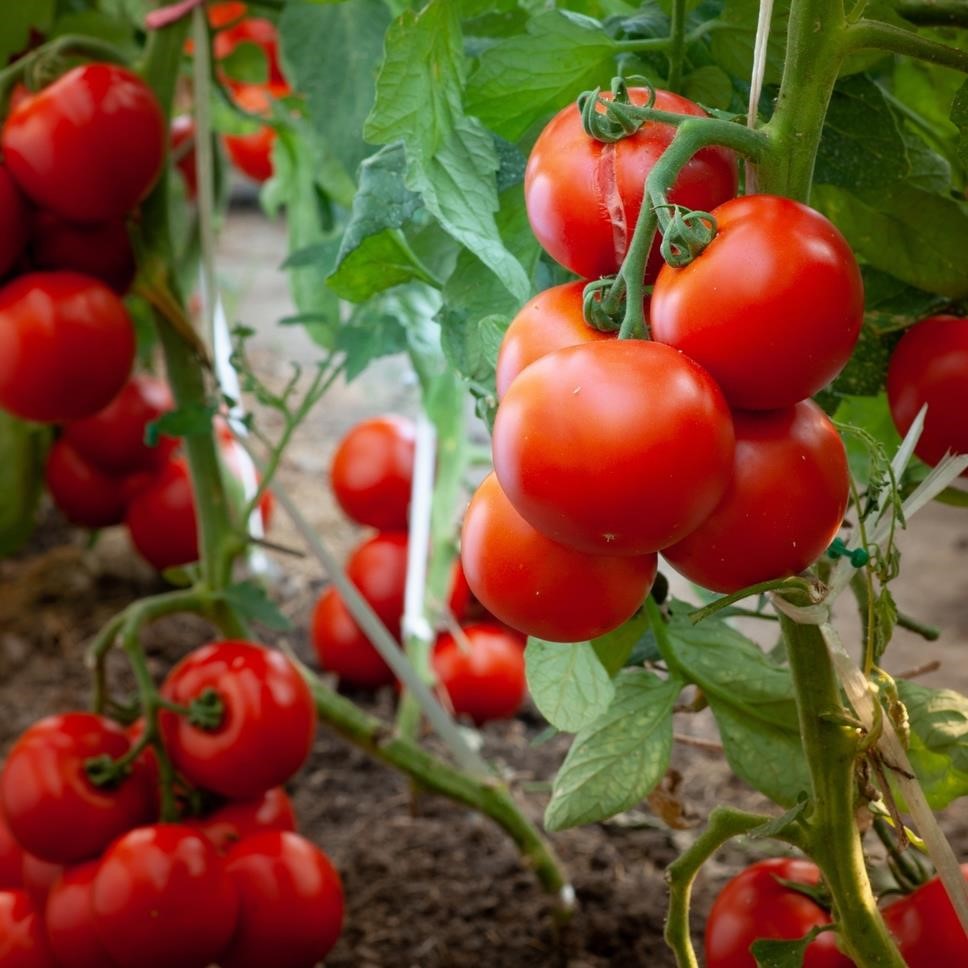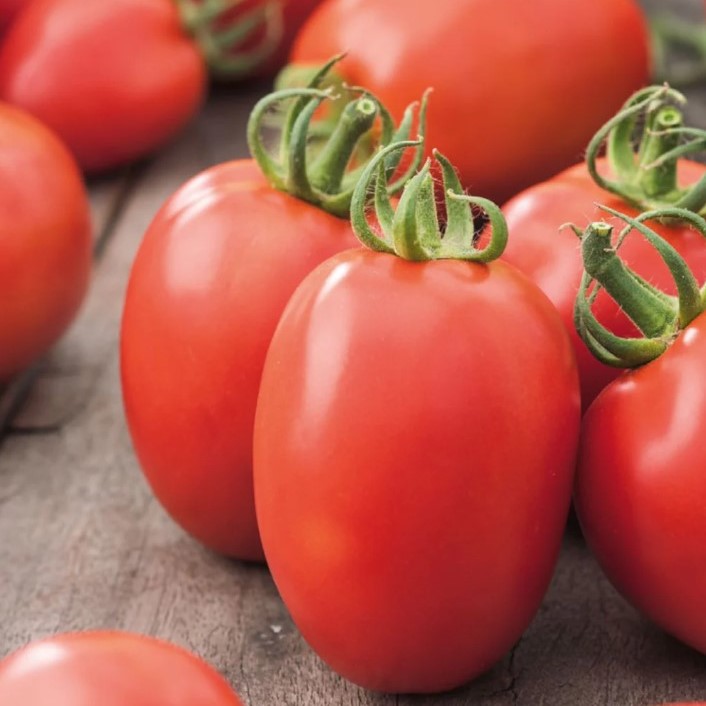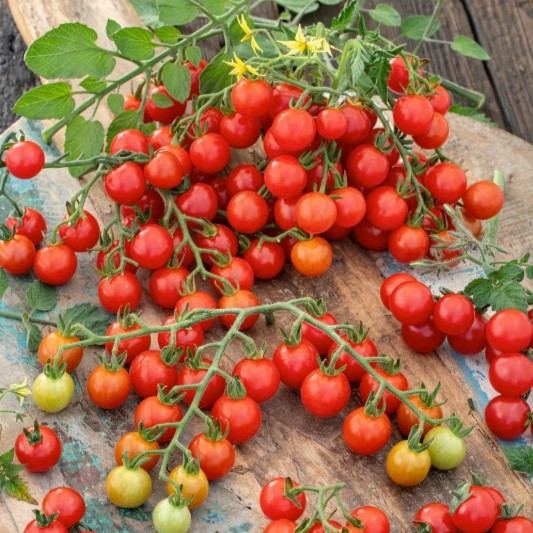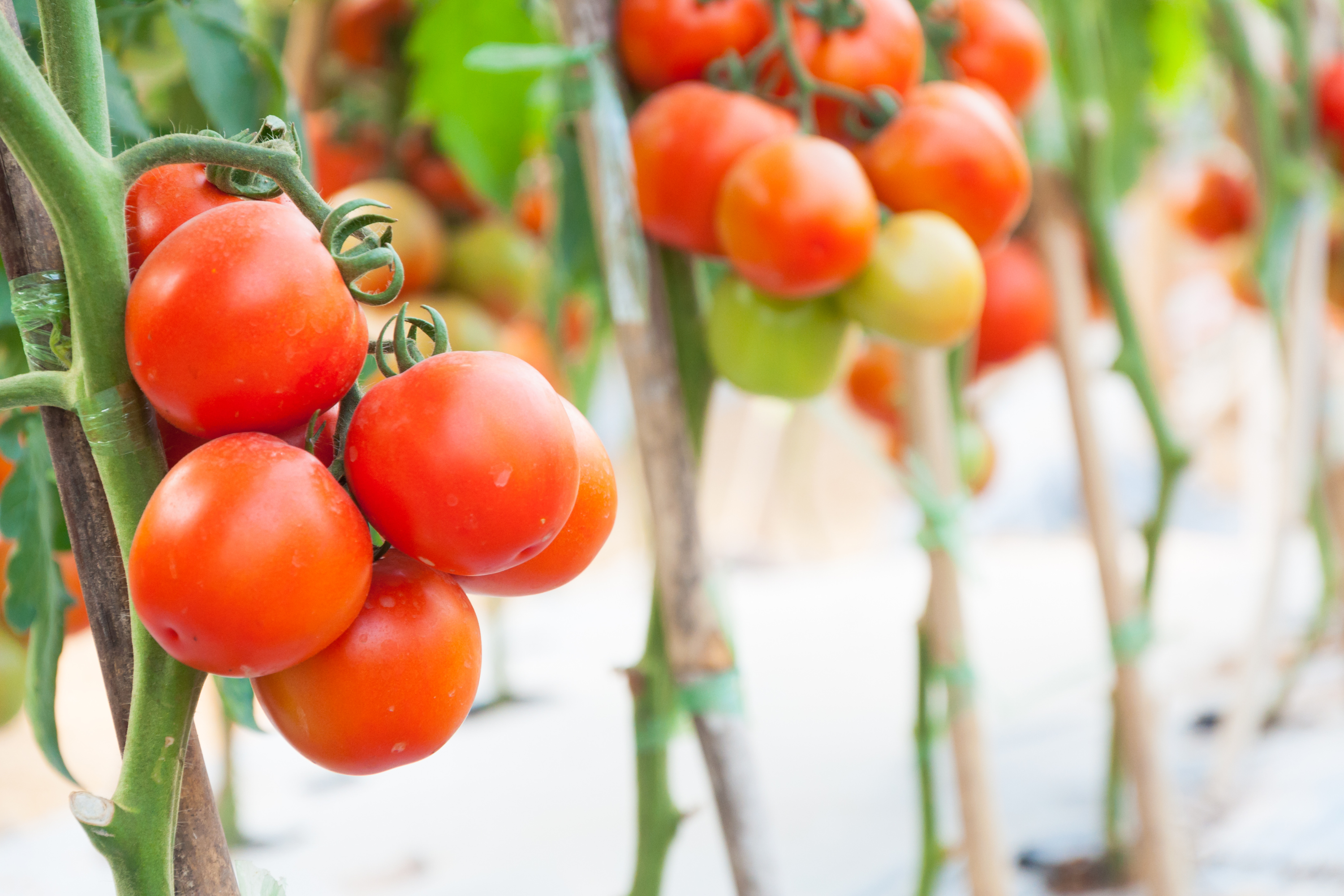
Growing Terrific Tomatoes
Our favourite, classic summer vegetable
Every year in October many thousands of tomato plants are planted in the hope that a great crop will be harvested.
Ripe tomato fruits come in red, yellow, orange, pink or white and round, flat, plum or pear shaped. Some may even develop unusual protuberances. Size varies from a 2-3cm diameter in the small, cherry tomatoes to approximately 10cm in the ‘Big Beef’ types. All can be eaten raw or cooked. The opportunities are boundless.
Tomatoes grow best in a full sun position but sheltered from the wind. They grow best at 21-24˚C – do not thrive at temperatures below 10˚C or above 27˚C, and do not tolerate frost.
Tomatoes tolerate a wide range of fertile and well-drained soils tending acidic within a pH range of 5.5 to 7.0. Some lime may need to be applied to very acid soils when growing tomatoes. The plants perform best if they are rotated with other vegetable crops to prevent a build-up of soil-borne pests and diseases. They should not be grown in the same patch of ground year after year. This can be a problem in small gardens and greenhouses, but can be remedied by removing the soil and adding fresh compost and manures. Tomatoes are also grown very successfully in containers and this is another popular option.
See our video on Tomatoes in Containers for an extended guide on success using pots. The video also shows some general tips and tricks that are useful for tomatoes grown in garden beds as well.
Soil and Fertilisers
Prepare the soil by working in plenty of well-rotted manure or compost at least 30cm deep since tomatoes develop a deep root system in this range and are gross feeders. Work in an appropriate garden fertiliser such as ‘Ican Organic Vege Food’ before planting; tomatoes need high levels of phosphate, but low levels of nitrogen.
There are a number of good tomato fertilisers available, dressings of ‘Novatec’ (an improved version of Nitrophoska Blue) or ‘Ican Tomato Food’ are most beneficial.
Regularly apply a liquid fertiliser during the growing season to boost and strengthen your plants. ‘Ican Liquid Tomato’ or ‘Ican Fast Food’ are ideal.
For plants grown in pots, you will need to select a pot-appropriate fertiliser.
Start with a good potting mix. ‘Tui Tomato Mix’ is available for a limited time during the growing season and has a 6-month supply of fertiliser mixed into the soil. Alternatively, ‘Ican Premium Potting Mix’ is a fantastic mix and can be topped up with a tomato-specific fertiliser for best results.
‘Tui Enrich Vege & Tomato’ granules are a 6 month release fertiliser, gentle for use in pots and containers. ‘Jobes Tomato Spikes’ are convenient for pushing below the soil surface on each side of the plant and will release feed for up to 8 weeks.

Sowing and Planting
Tomato seeds are best sown in late August or early September. The best temperature for germinating tomato seeds is 21 to 24˚C. Germination will occur at much lower temperatures, but it is slower.
Seed is best sown in a seed raising mix in clean seed trays. Fill trays to about 20mm below the top then firm and level carefully. Soak the tray and mix until it is thoroughly wet before the seed is sown and stand for a while to allow excess water to drain off. Sow seeds evenly across the tray and cover with a 3-5mm thick layer of fine seed raising mix.
Seed trays can be covered with a piece of glass to increase temperature and humidity and paper to keep seeds in the dark during germination. Turn the glass over daily so as to remove any condensation. A properly prepared tray should require no further watering until after seedlings have emerged. High humidity at the time of their emergence helps the seedlings to shed their seed coats quickly.
Seedlings should be pricked out when the seed leaves (cotyledons) are fully expanded. In temperatures of 21-24˚C this can be 6-12 days after sowing. Before pricking them out loosen them by sliding a small label or similar under the roots, lift the plants by one of their seed leaves – not the stem, to avoid damage.
Only vigorous healthy seedlings should be pricked out, into a good quality potting mix. Discard remaining seedlings.
Transplant into 5-6cm pots at the two or three leaf stage and give the seedlings ample ventilation, space and light. They can stand short periods of low temperature so long as day temperatures don’t fall below 7˚C, soil temperature is about 10˚C and the risk of frost is over.
If necessary cover with cloches or plastic over a frame or stake supports in the early stages to provide shelter.


Routine Care
All tomato types should be watered and mulched thoroughly once the soil is warm. Plants in containers need more frequent watering and supplementary tomato fertiliser to complement the loss of leached out nutrients. Be careful not to over water or overfeed as this may reduce flavour. Also, avoid watering the foliage as this may lead to fungus infection, apply water directly to the soil over the root area or use a watering can, soaker hose, micro irrigation drippers or similar.

In mid to late summer remove the terminal shoot to three leaves above a fruit truss to encourage the remaining fruit to ripen. Laterals should be removed about once a week, beginning about 3 weeks after planting. They readily bend and break off from a healthy plant, but can otherwise be cut with a pair of clean secateurs. Carry out this task when the plants are dry as there is less risk of disease infection.
The same applies to unwanted foliage. As leaves grow older they shade one another and the fruit. Removing some foliage improves air circulation and further reduces the risk of disease and allows more sunlight to ripen the fruit.
Grafted tomatoes do not need any laterals removed as the vigour from the roots is sufficient to support a larger plant.
Pests and Diseases
Some pests and diseases of tomatoes are; damping off of seedlings, mites, whiteflies, tomato caterpillars, bronze wilt, nematodes, fruit flies, tomato psyllid and tomato blight. Tomatoes under cover are susceptible to whiteflies, mosaic virus, grey mould (Botrytis), tomato leaf mould, magnesium deficiency, boron deficiency, stem rots, foot and root rots and blossom end rot.
Many of the above mentioned problems are rare and can be controlled readily if observed.
- Use a combination of Grosafe ‘Enspray 99’ and ‘Free Flo Copper’ for protection against mites, white fly, and various fungal conditions.
- ‘Yates Success Ultra’ is our most recommended pesticide for use on moths, caterpillars, thrips, and tomato psyllids.
- Blossom end rot is a common disorder which can be caused by irregular watering, or calcium and magnesium deficiency. The deficiencies can be resolved with the application of dolomite lime and/or magnesium chelate.
- For the treatment of botrytis and other severe fungal conditions, ‘Botry-Zen’ is your magic solution.
Come and see us at the garden centre if you encounter any of these problems and we can advise on the best means of control.


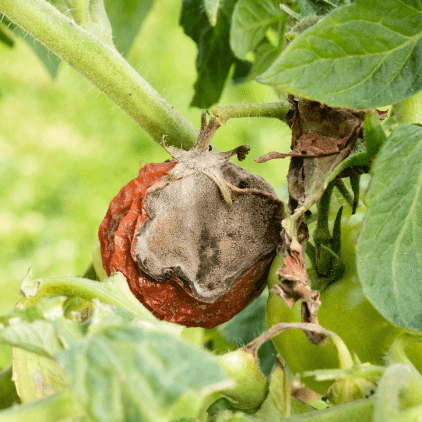
Harvesting
Pick fruits as they ripen. Harvest bush types usually from 7 to 8 weeks after planting and larger types 10 to 12 weeks after planting.
Grafted Tomatoes
Grafted tomatoes are ordinary tomato seedlings that has been grafted onto a rootstock of a vigorously growing variety of tomato. This enables your favourite tomato strain to grow into a larger, stronger plant with the capability of producing significantly larger quantities of fruit than a standard seedling tomato. They generally need a trellis or frame for support up to 2m high x 2m wide.
Heritage Tomatoes
There has been an upsurge of interest in these old heritage tomato varieties. Some varieties are being extensively tested for their ‘anti-cancer’ and health improvement qualities. Look out for these different varieties including; Black Krim, Russian Red, Brandy Wine, Yellow Pear, Wally’s Spanish, Moonbeam.
Heritage type tomatoes are prized cultivars for colour, shape and complexity in flavour. However they haven’t been through the rigorous breeding modern hybrids endure. Due to this, heritage varieties may be more susceptible to pests and diseases, be less productive and have a slightly shorter shelf life. If flavour is your goal, Heritage tomatoes should not be ruled out. They just need a little more care and attention than modern hybrids.
Popular Tomato Varieties
Tomato plants come available in the garden centre from approximately September through to February each year. Seed stock is available all year.
This is not an exclusive list, we get over a dozen different types of tomatoes in stock and there may be variance based on what the grower has available. Below are some of the most popular tomato varieties that are almost guaranteed to be available.


